Hello, steemians, and welcome to my page, eh!
My friend who brings me amps to fix brought a vintage Fender Princeton Reverb amp to me to go through and check out a couple of weeks ago. This amp was manufactured either in 1979 or 1980. This particular amp looks like it's in very nice condition. The chrome on the top pieces is less than perfect, but everything else looks really good.
Here's the back of the amp. These are what's known as an open back amplifier. You can see that the amp has an original Fender speaker.
When he brought it over, he told me that the person he got it from said that it was working, so the first thing we did was to plug it in, turn it on, and test it. Everything seemed to work ok except that the treble control was noisy and intermittent when it was turned up or down, and the reverb seemed to be a bit weak. One of the good things about the amp is that it has very little buzz when it's on, so the power supply filter capacitors are probably still good. He left it with me to go through and see if I can fix the treble control with cleaning, or if it needs to be replaced.
It's necessary to remove the chassis from the cabinet in order to get at the controls for cleaning. To do that, first you have to take one of the back pieces off the cabinet.
Then there's 4 long machine screws that hold the chassis in that must be removed from the top. Also, the power cord has a wire holder that must be unscrewed from inside the cabinet, then the chassis slides out the back of the cabinet. I put the chassis on a couple of improvised aluminum stands so it doesn't sit on the tubes.
First, I inspect all the solder connections and wires to make sure that everything is good, then I clean the control pots one by one by spraying a bit of control cleaner and lubricant into the opening on the back cover of the pot and then turning the control back and forth a bunch of times. This cleans the surface of the control and lubricates the shaft of the pot.
Here's a good look inside of the chassis. This amp seems to still have all original components.
The next thing to do after inspecting the components and cleaning the pots is to test all the tubes. All of the tubes in this amp were Fender labelled tubes, and all looked like they could be the original factory tubes. The first tube to test was the rectifier tube, a 5U4 tube. Here's the tube tester with the tube warming up in the socket.
There are several tests to perform on the tubes, a test for internal short circuits, a test for gas in the tube, and the basic load test. Here's the 5U4 with the load test. The meter shows that the tube is good.
Next, we move on to the power tubes. In this amp, the power tubes are a pair of 6V6GCs. Both of these tubes tested very good. Pretty good for a pair of power tubes that are probably 38 years old or so.
The next tests are done on the 4 preamp tubes. There are 3 of the 12AX7 tubes, and a 12AT7 tube to drive the reverb. Preamp tubes don't usually wear out as fast as the power amp tubes under normal use, but testing these old tubes is still a good idea. With these tubes, there are 2 triodes in the tube, each one is tested separately. You put the tube in the proper socket, set the settings on the tester for one section, do the tests, reset the settings for the other section, and repeat the tests. I tested all 3 of the 12AX7s before testing the 12AT7. All 3 of the 12AX7s turned out to be good, with strong readings.
One last tube to test, the 12AT7 reverb driver tube. This one turned out to test not so good. Still functional, but not very strong.
I wasn't too sure about this tube, so I dug another 12AT7 out of my supply of tubes and tested it for comparison. That tube tested strong, so I replaced the weak tube with the strong tube.
That does explain the weak performance of the reverb when we were first testing the amp.
Here's a picture of the chassis from the tube side, with the transformers. The preamp tubes have metal shields over them.
Perhaps one of the most interesting things about this amplifier is that it still had the owner's manual, schematic, and warrantee card with it. That's pretty impressive for an amp that's about 38 years old. Most of the time, those things are long gone. I think this amp was well taken care of, and not used all that much.
That's all I have for this post. In the next post for this amplifier, I'll go through the testing, and maybe even make a short video to demonstrate the sound of the amp.

Thanks for stopping by my page and checking out my post, eh!
As always, feel free to leave a question or a comment if you would like.
May the Steem Force be with you!




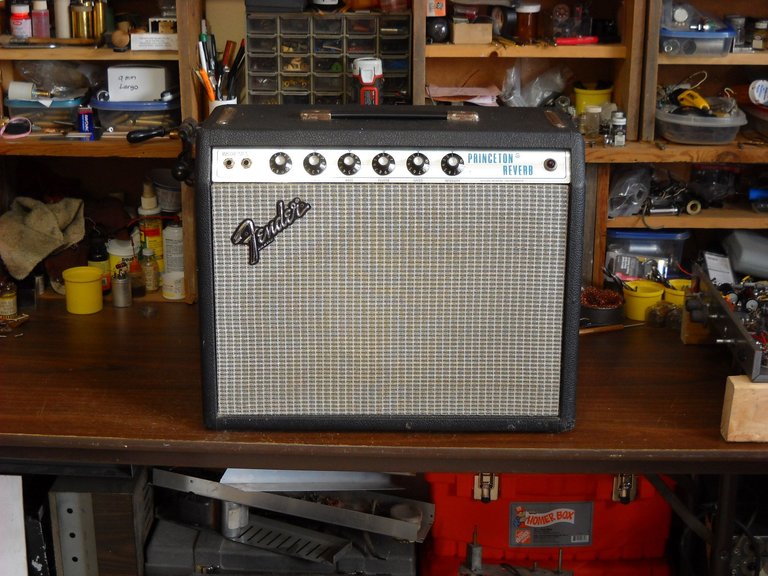
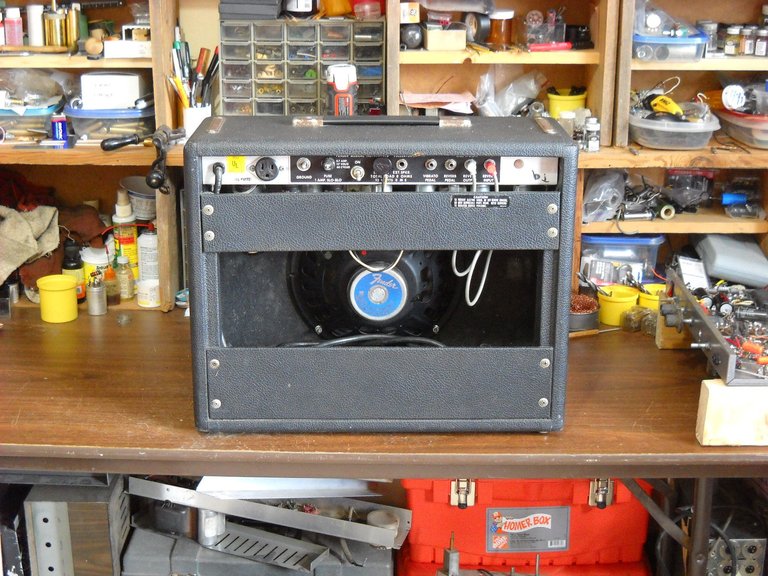
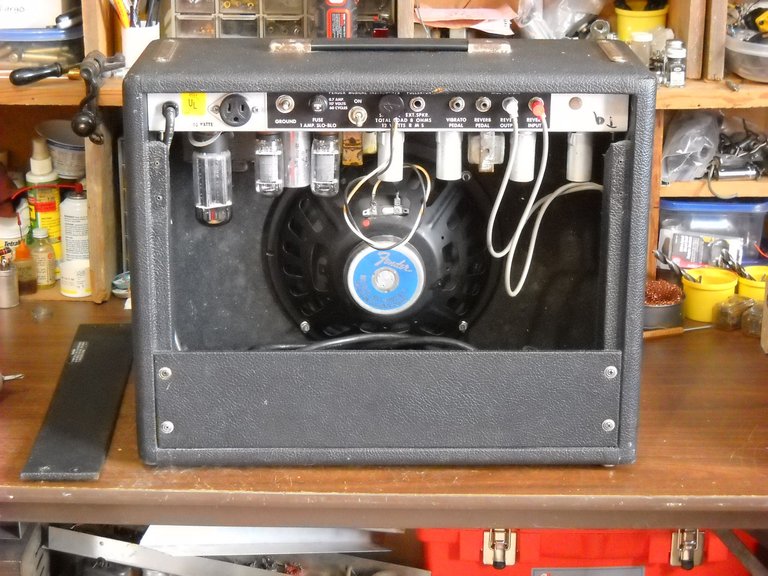
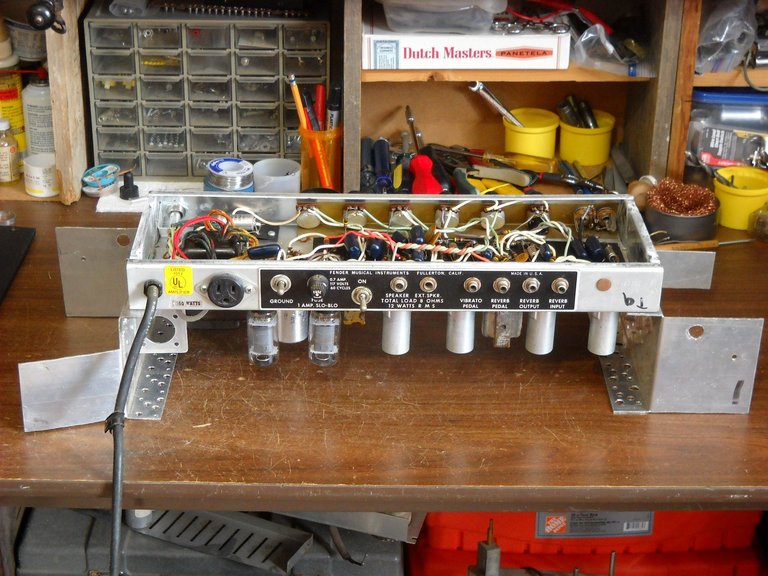
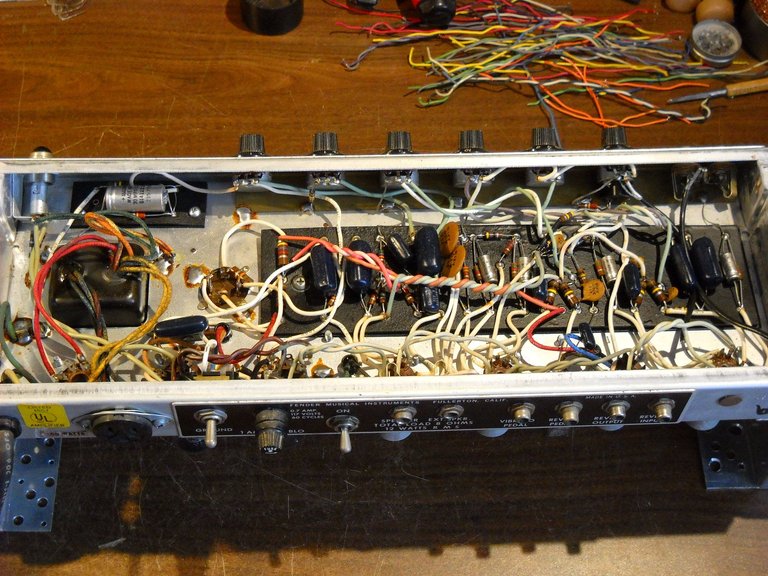
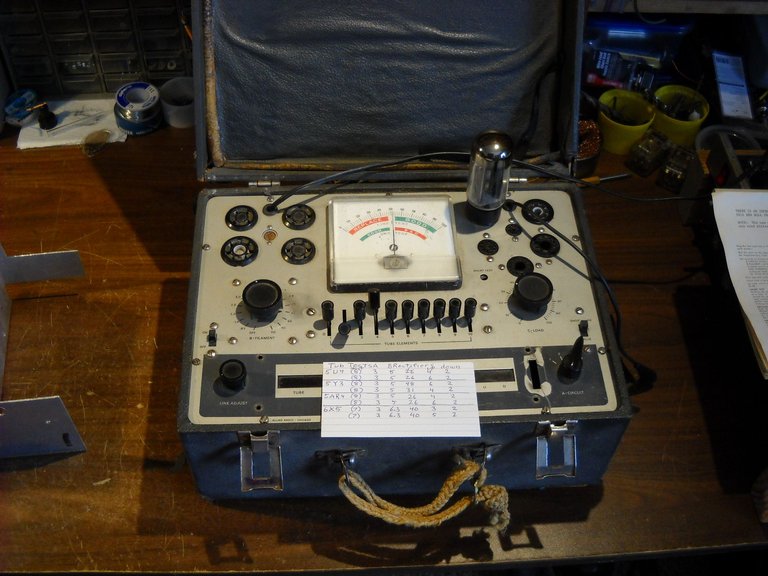
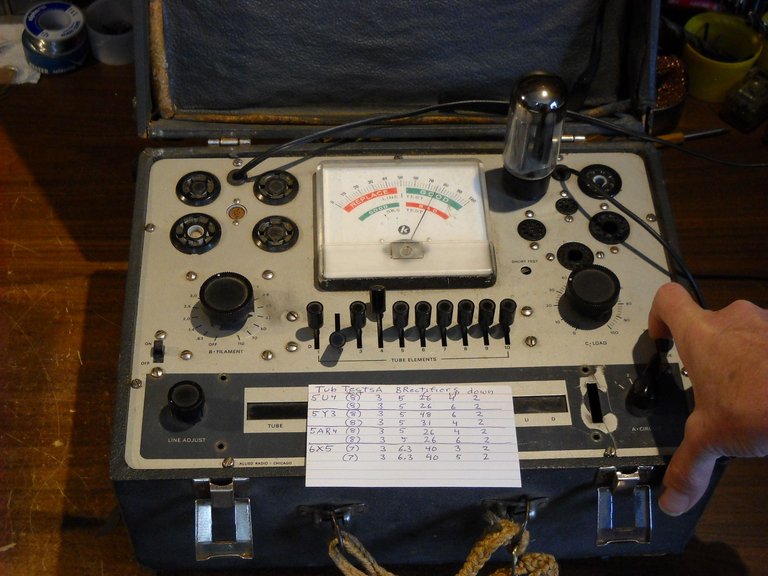
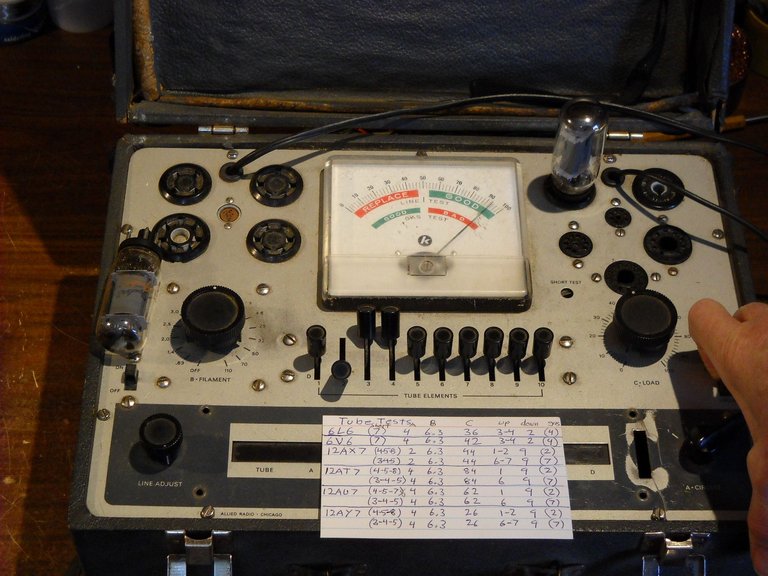
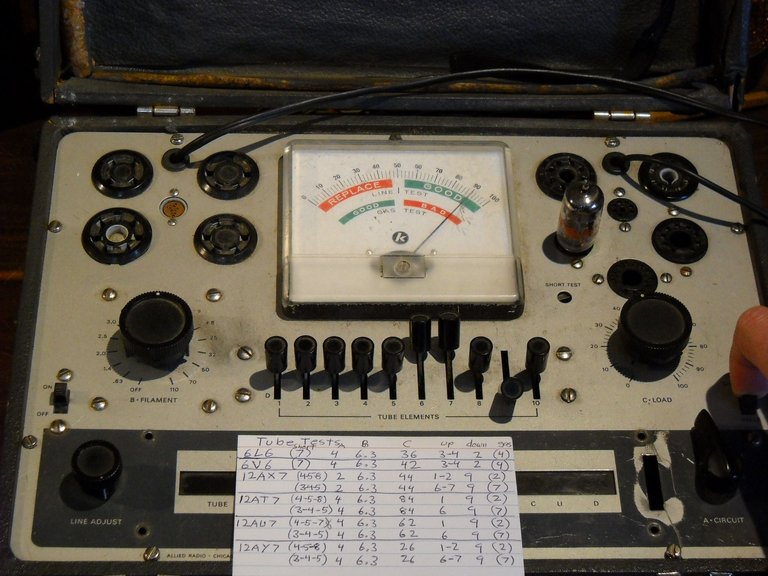
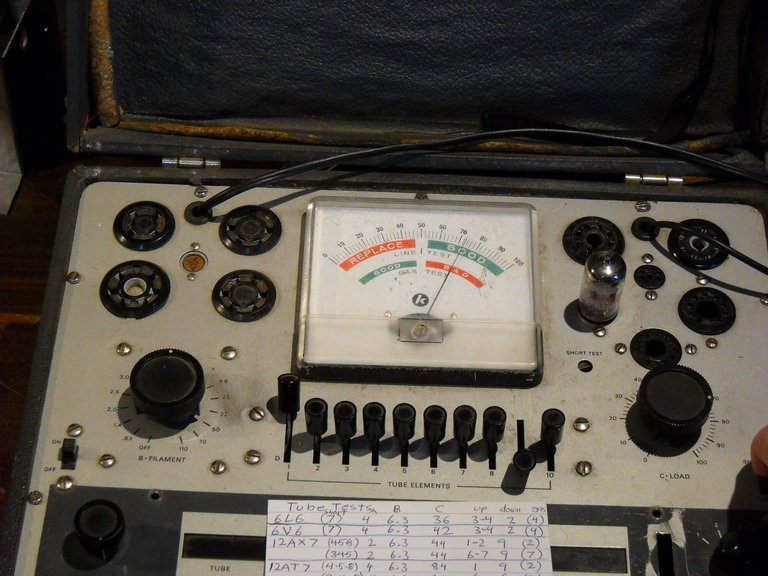
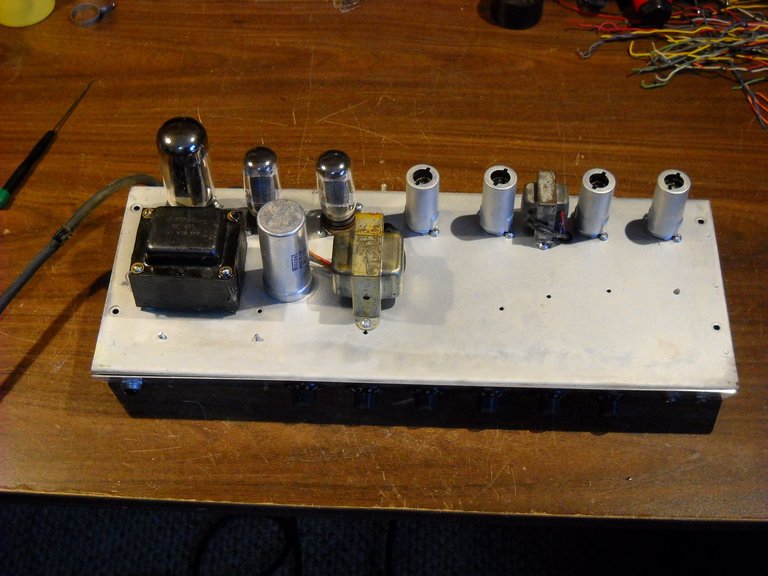
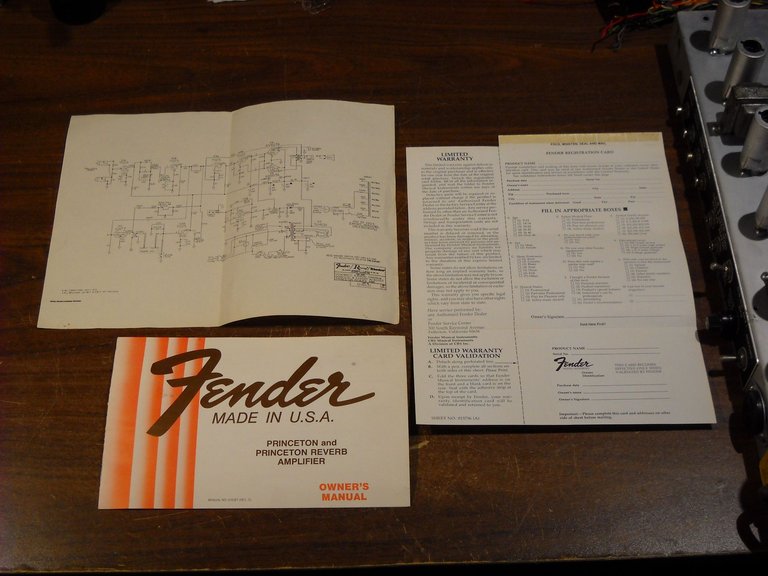
I am a big fan of your amplifier posts. I hope to do some myself in the near future. I have a couple of I amps I am going to be doing some work on.
Thank you!
I think it would be pretty cool if you were to do a few of these posts! I look forward to seeing them.
I have a bassman 10 (I think I mentioned it to you before) that when you plug into the 'studio' side and turn the treble pot, there is a relitively quiet (but still pretty audible) oscillation that happens and changes frequency as you turn the pot. I need to figure out what is going on with it.
Well, that is an interesting problem! There may be a broken lead on one of the parts in that section of the circuitry, or possibly a capacitor way out of spec.
Yeah, it is all original. The I was going to replace all of the caps anyways and if that doesn't do it, maybe I will discover the problem in the process.
Tube tester! need to see if old friend could get me one from auctions. I have an old Cathode Ray Oscilloscope if anyone wants to trade :P
You could probably find a tube tester on ebay also.
any suggestions? this too old? https://www.ebay.com/itm/Vintage-Rare-Supreme-Radio-Set-Model-85-Wooden-Tester-Tube-antique-estate-find/372266056993?hash=item56acc93d21:g:xywAAOSwWxxawXPR
That's quite the old tester! It's probably too old, and the auction says that it's not working, so it's probably not a good one to buy. You at least want one that works.
yea saw a better one but price jumped in no time flat.. https://www.ebay.com/itm/Vintage-KNIGHT-MODEL-400A-TUBE-TESTER-MANUAL/282905991886?ssPageName=STRK%3AMEBIDX%3AIT&_trksid=p2060353.m1438.l2649
Yeah, I'm not surprised. The Knight tester is a pretty good one. The one I have is similar to that one.
Great Article (How to) you're a pro engineer my friend :))